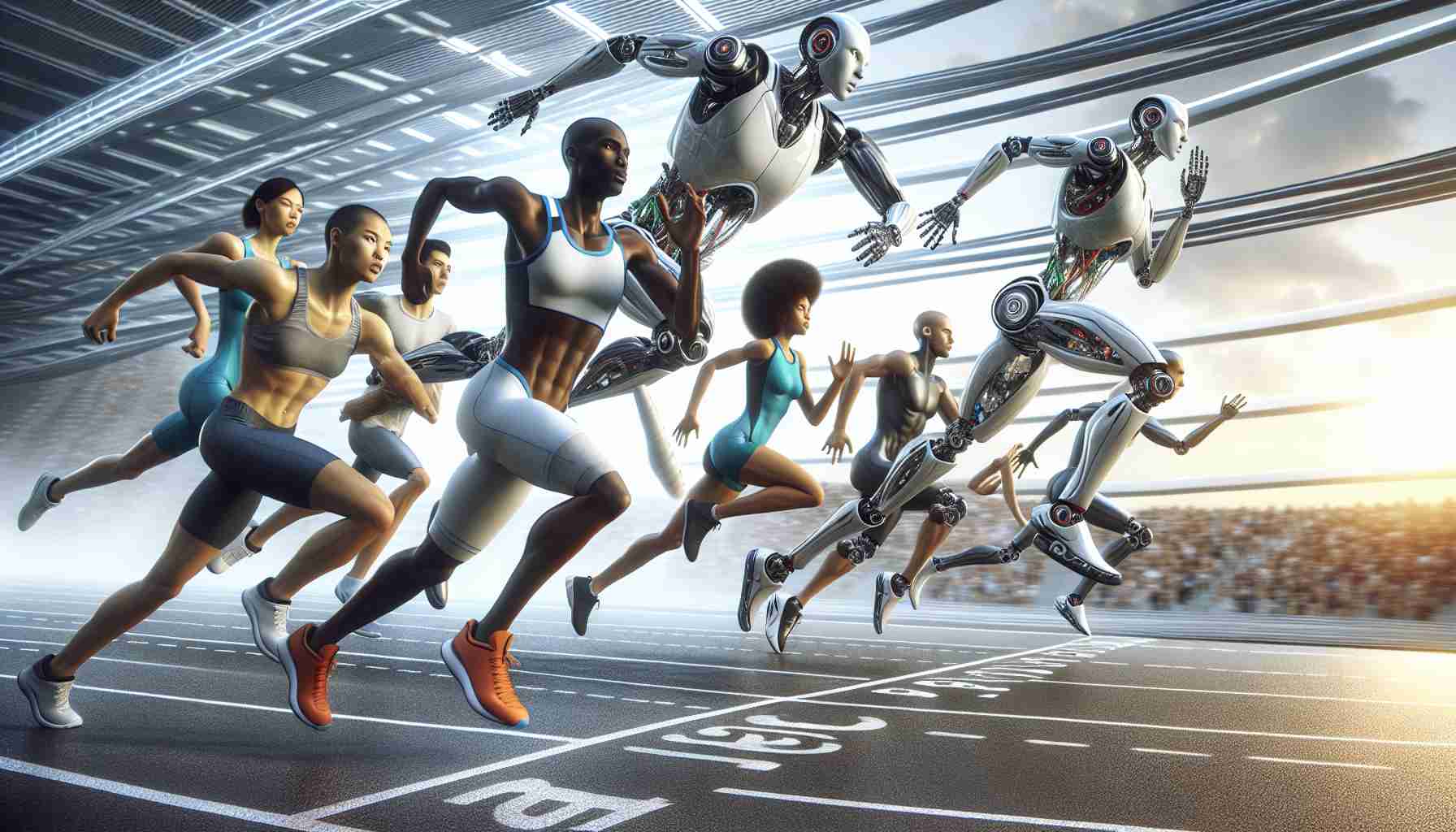History is being rewritten this April as Beijing’s Daxing district gears up to host the inaugural human-robot marathon. This half-marathon, featuring a remarkable combination of 12,000 human runners and advanced humanoid robots, is set to redefine the boundaries of sports and technology.
Organized by the Beijing Economic-Technological Development Area, known as E-Town, this marathon will showcase robots engineered by more than 20 innovative companies. To participate, robots must embody human-like characteristics and possess the ability to walk or run bipedally, with restrictions against wheeled designs. Specific guidelines dictate that participating robots need to be between 0.5 to 2 meters tall and maintain a hip-to-foot extension of at least 0.45 meters, allowing for both remote-controlled and autonomous models.
Among the notable competitors is “Tiangong,” crafted by the Embodied Artificial Intelligence Robotics Innovation Center. This humanoid robot has already impressed with its ability to run at an average speed of 10 kilometers per hour and will now take on the challenge of a full 21-kilometer race.
China’s investment in humanoid robotics is part of a broader strategy to tackle demographic issues, particularly an aging population affecting its workforce. With projections showing over 310 million citizens aged 60 and above by the end of 2024, the country is increasingly relying on robotics for caregiving and industrial purposes.
As this groundbreaking event unfolds, Beijing will also prepare for more robotic competitions in August, showcasing the expanding frontier of athleticism and technology.
Bridging the Gap: Human-robot Interactions and Their Societal Impact
The inaugural human-robot marathon in Beijing not only highlights the convergence of sports and technology but also signals profound implications for society and culture. As we witness bipedal robots competing alongside humans, the event prompts essential questions about our evolving relationship with technology. The integration of robots into physical challenges previously dominated by humans may alter perceptions of athleticism and merit, bridging a gap between man and machine.
With over 310 million citizens projected to be over the age of 60 in China by 2024, the reliance on robotics is poised to reshape the labor market, particularly in caregiving and health services. This shift could alleviate some of the pressures on an aging workforce, yet it also raises concerns about job displacement and the nature of human interaction in care settings.
Furthermore, the environmental implications of advancing robotics should not be overlooked. As research and development in humanoid robotics escalate, the demand for sustainable practices in manufacturing and energy consumption becomes paramount. Future trends may lead to innovations that not only enhance performance but also significantly reduce ecological footprints.
Ultimately, the long-term significance of events like the marathon will likely extend beyond athletic boundaries, influencing cultural narratives about technology, identity, and community as we navigate an increasingly automated world. As societies adapt, the discourse surrounding ethical implications and the human experience in an age of machine symbiosis will become ever more critical.
Can Robots Outrun Humans? Witness the Historic Human-Robot Marathon in Beijing!
Overview of the Inaugural Human-Robot Marathon
This April marks a pivotal moment in the intersection of technology and athletics as Beijing’s Daxing district hosts the inaugural human-robot marathon. This innovative event combines the competitive spirit of traditional marathons with the technological marvel of humanoid robots. Featuring an exhilarating blend of 12,000 human participants alongside sophisticated humanoid robots, this marathon is set to redefine modern sporting events.
Event Details and Specifications
The marathon is organized by the Beijing Economic-Technological Development Area (E-Town) and includes competitors who meet strict criteria. Participating robots, engineered by over 20 cutting-edge companies, must possess human-like attributes and the capability to walk or run bipedally. Some key specifications for the robots include:
– Height Requirement: Robots must be between 0.5 to 2 meters tall.
– Leg Extension: A minimum hip-to-foot extension of 0.45 meters is necessary.
– Design Restrictions: Only bipedal robots are allowed—wheeled designs are prohibited.
Among the exciting entrants is the “Tiangong,” designed by the Embodied Artificial Intelligence Robotics Innovation Center. Tiangong has demonstrated its proficiency by achieving an impressive running speed of 10 kilometers per hour, and it will participate in a full-distance half-marathon of 21 kilometers.
Broader Implications
China’s robust investment in humanoid robotics reflects the country’s response to significant demographic challenges, particularly an aging population. With estimates predicting over 310 million citizens aged 60 and above by the end of 2024, the reliance on robotics is increasing for caregiving and industrial applications. The push for humanoid robots is seen as a potential solution to address workforce shortages and support senior citizens.
Future Trends in Robotic Competitions
Following the human-robot marathon, Daxing district will also brace for a series of robotic competitions scheduled for August. These events underscore a growing trend where athleticism meets technological innovation, setting the stage for further advancements in humanoid robotics.
Pros and Cons of Humanoid Robotics in Sports
Pros:
– Expands the definition of athleticism, allowing for diverse participation.
– Encourages technological innovation and collaboration among industries.
– Addresses societal challenges related to aging populations.
Cons:
– Raises ethical questions regarding the role of robots in human activities.
– May create competitive disparities between humans and advanced robots.
– Possible public apprehension towards the integration of robots in everyday life.
Conclusion
The human-robot marathon in Beijing is not just an event; it is a glimpse into the future of sports and robotics. As technological advancements continue to evolve, society must grapple with both the opportunities and challenges presented by this new frontier. With further competitions and developments on the horizon, the relationship between humans and robots promises to be a compelling narrative to watch.
For more information about the latest in robotics and technology, visit the Robotics Institute website.
